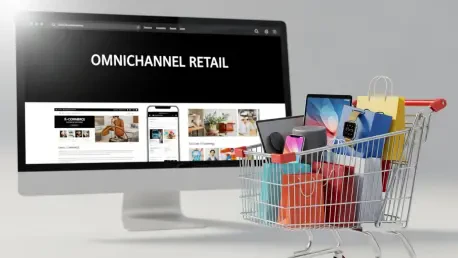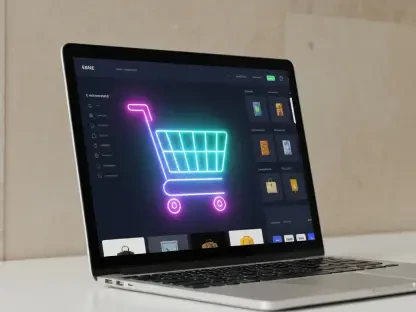Imagine an Australian retailer poised to launch a major flash sale across social media, mobile apps, and physical stores, only to be stalled by a clunky, outdated system that takes weeks to synchronize channels, missing out on critical market opportunities. This frustrating scenario is all too common for businesses trapped in traditional e-commerce platforms. As customer expectations for seamless shopping experiences soar, with nearly half of Australian shoppers demanding unified omnichannel interactions, the need for innovative solutions has never been more urgent.
Headless commerce emerges as a transformative approach, decoupling front-end customer interfaces from back-end operations to enable unparalleled flexibility and speed. This FAQ article aims to explore how this technology empowers Australian retailers to meet modern consumer demands. Readers will gain insights into the limitations of conventional systems, the specific benefits of headless architecture, and practical steps for implementation, all while addressing key questions surrounding this game-changing strategy.
What Is Headless Commerce and Why Does It Matter for Omnichannel Retail?
Headless commerce refers to an e-commerce architecture where the front-end (what customers interact with, like websites or apps) is separated from the back-end (the operational systems handling inventory, payments, and data). This disconnection, facilitated by APIs, allows businesses to manage each component independently. For Australian retailers, this matters because it addresses the growing demand for cohesive omnichannel experiences where customers expect consistency across every touchpoint, be it online, in-store, or via social platforms.
The importance of this technology lies in its ability to overcome the rigidity of traditional monolithic systems, which often hinder rapid adaptation to market trends. With nearly 50% of Australian shoppers prioritizing seamless interactions across channels, as highlighted in recent industry reports, businesses can no longer afford fragmented experiences. Headless commerce ensures real-time data synchronization, enabling a unified customer journey that boosts satisfaction and sales.
Global research further underscores its relevance, with 73% of businesses worldwide adopting this approach reporting significant gains in delivering innovative digital experiences. For Australian retailers, embracing headless commerce isn’t just about keeping up; it’s a strategic move to stay ahead in a competitive landscape where customer expectations evolve faster than ever.
How Do Traditional E-commerce Platforms Limit Australian Retailers?
Traditional e-commerce platforms, often monolithic in design, tightly couple front-end and back-end systems, creating a single, inflexible unit. While these setups were once groundbreaking, they now pose significant challenges for Australian retailers striving to meet modern omnichannel demands. The inability to quickly adapt to new sales channels or customer behaviors results in missed opportunities and frustrated teams.
A common issue is the slow response to market trends, where launching a campaign across multiple platforms can take weeks due to system dependencies. This delay often means competitors seize the moment first, leaving businesses lagging behind. Additionally, channel silos—where websites, apps, and in-store systems don’t communicate—create disjointed customer experiences, eroding trust and reducing conversion rates.
The technical complexity of updating these platforms exacerbates the problem, as even minor changes can require extensive development cycles, impacting everything from checkout flows to inventory management. This rigidity not only stifles innovation but also hampers scalability, particularly during peak seasons like Christmas or Boxing Day, when traffic spikes demand robust, adaptable systems.
What Are the Key Benefits of Headless Commerce for Omnichannel Retail?
Headless commerce offers Australian retailers a powerful solution by enabling seamless integration across diverse customer touchpoints through API-driven architecture. One standout benefit is data unification, ensuring that customer interactions on a mobile app instantly reflect on websites or in-store systems. This consistency eliminates the frustration of restarting shopping journeys when switching channels, fostering a smoother experience.
Another advantage is the liberation of marketing and development teams from constant friction. Marketers can swiftly update content or launch campaigns without waiting for IT support, while developers focus on enhancing back-end stability. Some Australian businesses have reported slashing campaign launch times from weeks to mere hours, securing a critical edge in fast-moving markets.
Lastly, headless commerce facilitates channel multiplication, allowing retailers to power unlimited front-ends—such as social commerce integrations or IoT devices—from a single back-end. This capability ensures that new product launches or promotions appear simultaneously across all platforms with consistent information, a vital factor for fashion brands or retailers managing complex catalogs in Australia.
How Does Headless Commerce Improve Speed to Market for Australian Businesses?
Speed to market is a decisive factor in retail success, and headless commerce significantly accelerates this for Australian businesses by removing traditional bottlenecks. Unlike monolithic systems where every update requires extensive coordination between front-end and back-end, headless architecture allows independent modifications. This means launching a new feature or channel, like Instagram Shopping, can happen in days rather than months.
This agility provides a competitive advantage, especially in a market where trends shift rapidly. Retailers can test new customer experiences or roll out promotions without risking system-wide disruptions. The separation of concerns ensures that back-end operations remain stable while front-end innovations are deployed swiftly, meeting consumer demands at the right moment.
Moreover, the flexibility to integrate emerging technologies or third-party tools without overhauling entire systems further enhances responsiveness. Australian retailers leveraging this approach often find themselves capturing market share ahead of competitors still tethered to slower, outdated platforms, turning speed into a tangible business asset.
What Impact Does Headless Commerce Have on Customer Experience and Loyalty?
Enhancing customer experience is at the core of headless commerce’s value proposition for Australian retailers. By ensuring real-time synchronization of data across all touchpoints, this technology creates a cohesive shopping journey where customers don’t need to repeat actions or re-enter information. A cart updated on a mobile app, for instance, reflects instantly in-store, making interactions feel intuitive and effortless.
Personalization also reaches new heights with headless systems, as unified data allows for tailored recommendations and targeted promotions regardless of the channel. This level of customization resonates with Australian consumers who value relevance, driving higher engagement and fostering repeat business. A seamless, personalized experience often translates into stronger brand loyalty over time.
Beyond individual interactions, the improved site performance and mobile responsiveness enabled by headless architecture ensure faster load times and smoother navigation. These technical enhancements reduce bounce rates and increase satisfaction, cementing customer trust in the brand and encouraging long-term relationships in a crowded retail market.
How Can Australian Retailers Get Started with Headless Commerce?
Transitioning to headless commerce begins with a deep understanding of customer journeys specific to the Australian market. Retailers should map out how consumers discover products, research options, and make purchases across channels. Identifying pain points, such as abandoned carts due to inconsistent data, helps prioritize areas for improvement and informs strategic decisions about technology deployment.
Assessing the current e-commerce setup is the next critical step. Determining whether existing platforms hinder growth, speed, or multi-channel integration provides clarity on the need for headless solutions. Many Australian businesses discover that their traditional systems struggle with mobile optimization or rapid feature updates, signaling a clear case for transformation.
Building robust APIs and selecting the right headless platform are foundational to success. Retailers should focus on systems with strong integration capabilities, scalability for growth, and support for local market needs. Starting small with a pilot project, such as a new mobile app feature, allows for testing and refinement before scaling to broader omnichannel initiatives, minimizing risk during the shift.
What Challenges Might Australian Retailers Face When Adopting Headless Commerce?
Despite its advantages, headless commerce adoption can present hurdles for Australian retailers, starting with the technical skills gap. Managing decoupled systems requires expertise in API integrations and front-end development, which may not be readily available in-house. Partnering with specialized software developers can bridge this gap, ensuring smooth implementation without overloading internal resources.
High initial investment is another concern, as transitioning involves costs for new technology, training, and potential team restructuring. However, viewing this as a long-term investment is key, with returns manifesting through faster market entry and enhanced customer retention. Industry surveys indicate that many businesses recoup costs through increased sales driven by improved experiences.
Resistance to change within organizations can also slow progress, as teams accustomed to legacy systems may hesitate to adapt. Clear communication about the benefits, coupled with comprehensive training, helps alleviate concerns. Ensuring that staff understand how headless commerce streamlines their workflows can turn reluctance into enthusiasm for the new approach.
Are There Real Examples of Headless Commerce Success in Australia?
Concrete examples of headless commerce success highlight its transformative potential for Australian retailers across various sectors. Cotton On, a prominent retail name, adopted this approach to unify operations across web, mobile, and physical stores. By integrating third-party tools for personalization and real-time inventory tracking, they achieved faster site speeds and a notable uptick in customer satisfaction and sales.
The Iconic, a leading fashion retailer, also reaped benefits by enhancing mobile shopping experiences through headless architecture. Real-time data synchronization allowed for highly customized interactions, boosting engagement and encouraging repeat purchases. This adaptability to individual customer needs set them apart in a competitive online fashion space.
Bondi Sands, a top self-tanning brand, leveraged headless flexibility to expand its digital presence while maintaining brand consistency across platforms. Integrating features like loyalty rewards and custom offers, they retained existing customers and attracted new ones, demonstrating how this technology supports both growth and customer connection in niche markets.
What Future Trends Will Shape Headless Commerce in Australian Retail?
Looking ahead, headless commerce in Australia is set to be influenced by emerging technologies like AI and machine learning, with over 91% of retailers in the region investing in these capabilities. The API-driven nature of headless systems allows for rapid deployment of AI tools across customer service, pricing strategies, and inventory management, ensuring businesses stay competitive in personalization and efficiency.
Augmented and virtual reality are also gaining traction, moving beyond novelty to practical shopping aids. Australian retailers in furniture and beauty sectors are already using AR for try-ons and visualizations. Headless commerce supports the integration of these immersive experiences into multiple channels without disrupting core operations, paving the way for innovative customer interactions.
Social commerce continues to evolve with platforms like Instagram and TikTok introducing new shopping features. Headless architecture enables quick adaptation to these changes, allowing retailers to test and optimize social shopping experiences while maintaining consistent product data. This flexibility ensures Australian businesses can capitalize on the latest consumer behaviors as they emerge.
Final Thoughts
Reflecting on the insights shared, it becomes clear that headless commerce has addressed critical pain points for Australian retailers, from overcoming the constraints of traditional platforms to delivering seamless omnichannel experiences. The real-world successes of brands like Cotton On and The Iconic underscore the tangible impact of this technology on speed, customer loyalty, and market adaptability. Each answer provided a piece of the puzzle, illustrating how decoupled systems have empowered businesses to meet modern consumer demands with agility.
Moving forward, Australian retailers should consider auditing their current systems to identify gaps in omnichannel performance, using this as a springboard to explore headless solutions. Engaging with experienced technology partners can simplify the transition, offering tailored guidance for integration and scaling. As trends like AI and social commerce continue to shape retail, staying proactive in adopting flexible architectures will be essential to remain relevant and drive sustained growth.









